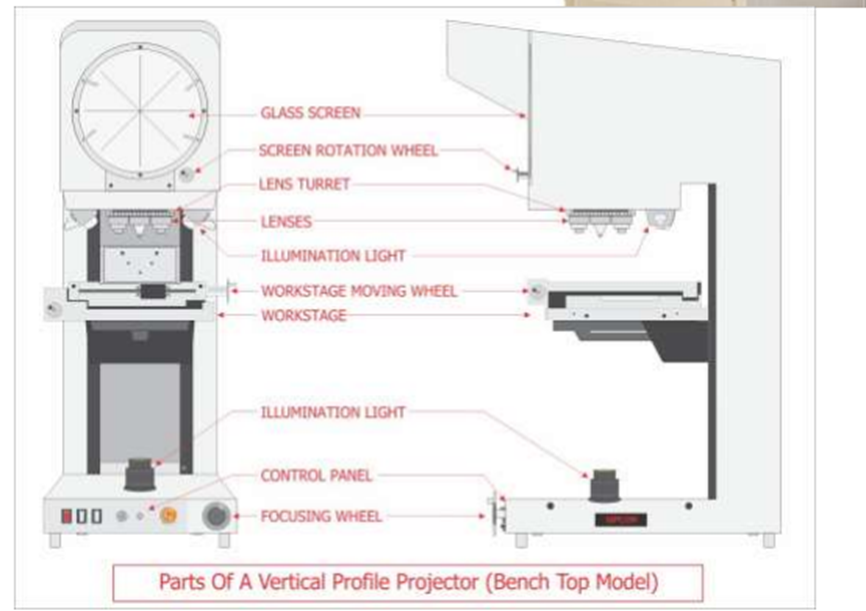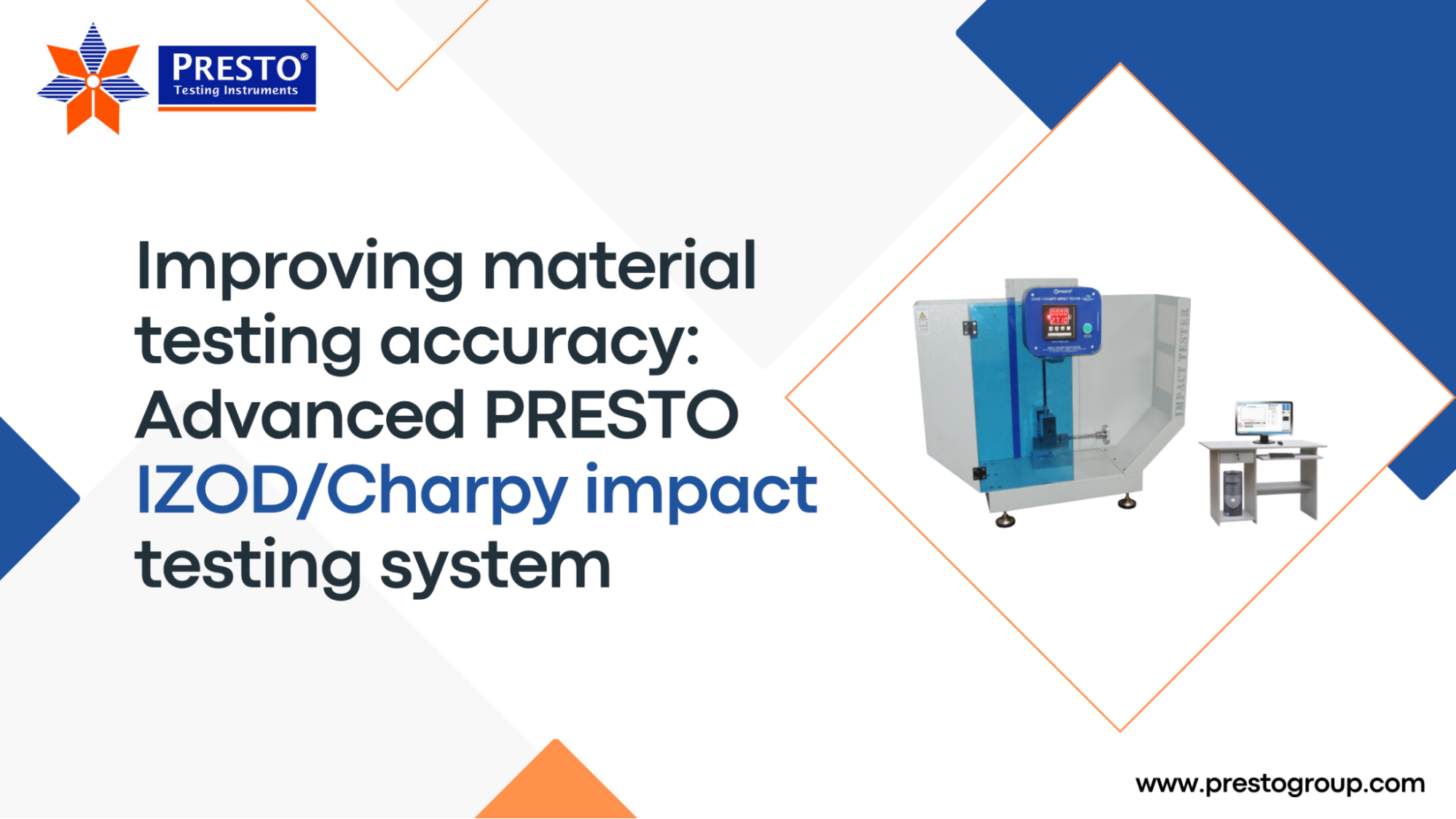

In the world of precision measurement and quality inspection, optical comparators, also known as profile projectors, play a pivotal role. These non-contact optical instruments project the magnified silhouette of a part onto a screen for accurate dimensional comparison against prescribed limits. From automotive to aerospace, and electronics to manufacturing, these tools are indispensable.
This blog delves deep into the profile projector working principle, its types (vertical and horizontal), advantages and disadvantages, real-world applications of profile projector, and even sheds light on profile projector specifications, pricing, and more.
A profile projector (also known as an optical comparator) is an optical instrument that magnifies the outline of a part and projects it on a screen for measurement and comparison against standards. It allows users to inspect minute components, holes, curves, and threads without physically touching the part, thus avoiding deformation.
.jpg)
A profile projector diagram illustrate the key components that enables its functionality. The main parts includes:
The light pass through or around the workpiece, creating a shadow that is magnified by the projection lens and reflected by mirrors onto the screen, where measurements is taken.
The working principle of a profile projector is based on optics and shadow projection. Here’s how it works:-

By rotating or adjusting the lenses and mirrors, the user can observe different features of the component in a magnified form.
Profile projectors is classified based on their light path orientation: vertical profile projector and horizontal profile projector.

The choice between vertical and horizontal depend on the workpiece’s size, weight, and geometry. Vertical projectors excels for flat parts, while horizontal ones is better for cylindrical or heavy components.
Advantages
Disadvantages
Profile projectors are widely used across numerous industries. Here are some key applications of profile projector:
Profile projectors are particularly valuable in industries where non-contact measurement are critical, such as for soft materials like rubber or delicate glassware.
The profile projector specification vary by model but typically include:
| Feature | Specification |
| Magnification | 10x, 20x, 50x, 100x (interchangeable lenses) |
| Screen Size | 12–36 inches (up to 60 inches for large models) |
| Measuring Range | 50x50 mm to 400x300 mm |
| Least Count | 0.1–1 micron |
| Light Source | Halogen, LED, Xenon, or Tungsten |
| Stage Travel (X-Y) | 50–300 mm, with linear encoders |
| Digital Readout | Optional, with geometric measurement software |
| Weight Capacity | Up to 300 lbs for heavy-duty models |
| Optics | Telecentric for distortion-free projection |
| Illumination | Contour (bottom) and coaxial surface lighting |
Modern digital profile projectors incorporate high-resolution cameras, automatic edge detection, and software for instant measurements, enhancing accuracy and speed.
Digital profile projectors represents a significant advancement over traditional models. Equipped with high-resolution cameras, telecentric lenses, and software, they automates measurements, eliminate operator subjectivity, and supports 3D inspection to some extent. Systems like KEYENCE’s IM Series can measure up to 99 dimensions in seconds with ±0.7 µm accuracy. These projectors integrates with CAD files for direct comparison, streamlining quality control and reverse engineering. While more expensive, their speed, accuracy, and data analysis capabilities makes them ideal for high-volume production.
1. What is the difference between a vertical and horizontal profile projector?
A: A vertical profile projector has a light path parallel to the screen, ideal for flat, lightweight parts like gaskets. A horizontal profile projector has a perpendicular light path, suited for heavier or cylindrical parts like shafts, often with larger screens.
2. How does a digital profile projector improve over traditional models?
A: Digital profile projectors use cameras, software, and automatic edge detection to perform measurements faster and with higher accuracy (±0.7 µm). They reduce operator error, support CAD integration, and can handle complex parts more efficiently than manual models.
3. What are the main applications of a profile projector?
A: Applications of profile projectors include inspecting gears, threads, cams, and molds in industries like aerospace, automotive, electronics, and medical device manufacturing. They are also used for reverse engineering and quality control.
4. How much does a profile projector cost?
A: The profile projector price depends on automation, depending on features like screen size, magnification, and software capabilities.
Q5: Can profile projectors be used for batch inspections in industries?
A: Yes, especially digital models are highly efficient for batch inspections as they allow fast and repeatable measurements with minimal operator intervention.
The Optical comparator or profile projector remain a vital tool in precision manufacturing., offering non contact, high accuracy measurement for a wide range of applications. Whether using a vertical profile projector for flat components or a horizontal profile projector for heavier part, these instruments ensures quality and compliance with strict tolerances. While traditional models is cost effective and simple, digital profile projectors enhances efficiency with automation and advanced software. By understanding the profile projector working principle, specifications, and advantages and disadvantages, manufacturers can selects the right tool to meet their needs, balancing profile projector price with performance.
Need help selecting the right Profile Projector?
Contact Presto at: +91 9210 903 903
Mail: info@prestogroup.com
Let us guide you with expert advice and the latest technology in measurement solutions!
Related Blogs

Learn what a Colorimeter is, how it works, and its key parts, uses, and advantages in color measurement. Discover how this precision instrument ensures accurate color consistency across industries.

The IZOD/Charpy Impact Tester is a crucial piece of equipment used in material testing to determine the impact strength or toughness of materials, particularly metals, plastics, and composites.

For more information such as customization and price of the Presto Bursting Strength Tester, as well as - its applications in enhancing the durability of plastic products.